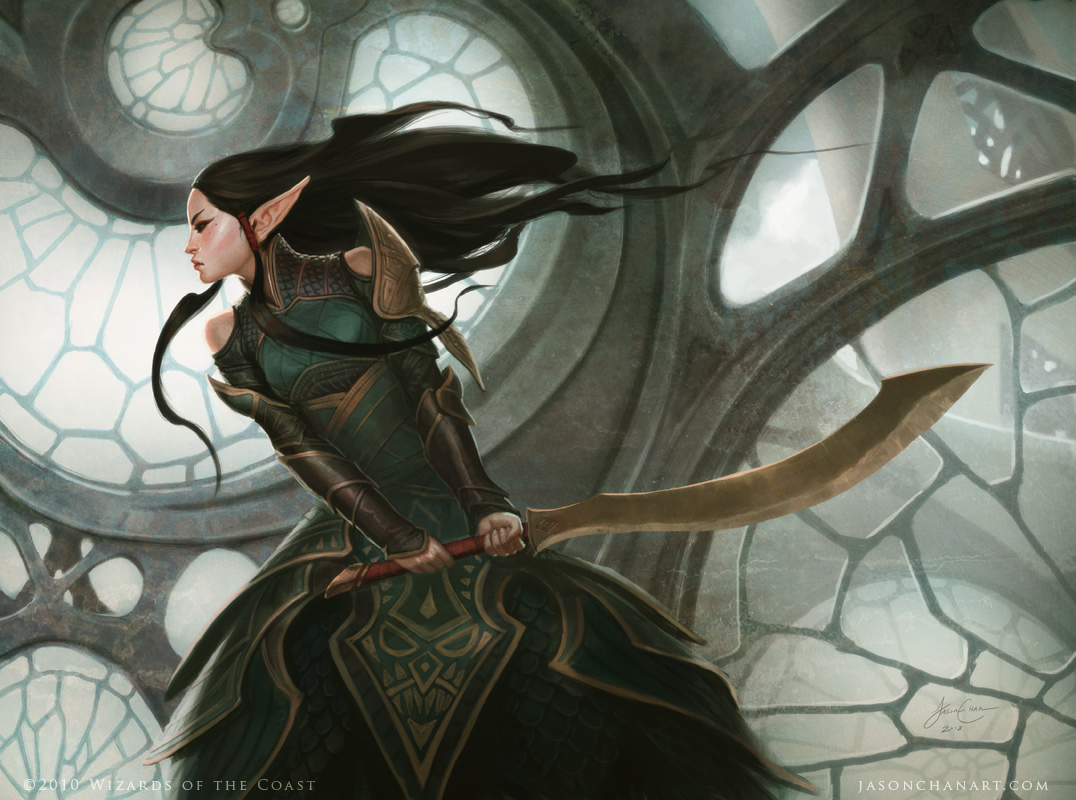The Bladesinger Prestige Class
Bladesingers are elves who bravely defend their people and lands. They are elf wizards who master a school of sword fighting grounded in a tradition of arcane magic. In combat, a bladesinger uses a series of intricate, elegant maneuvers that fend off harm and allow the bladesinger to channel magic into devastating attacks and a cunning defense.
Styles of Bladesinging are broadly categorized based on the type of weapon employed, and each is associated with a category of animal. Within that style are specializations named after specific animal types, based on the types of spells employed, the techniques of the master, and the particular weapon used.
Styles that employ a sword belong to the Cat family, including the longsword-wielding Lion style and the scimitar-wielding Red Tiger style. Styles that focus on the use of hafted weapons belong to the Bird family, including the handaxe-throwing Eagle style or warpick-wielding Raven style. Styles that use whips, chains, or flails are included in the Snake style family, such as the whip-wielding Viper style.
Bladesingers who apprentice to a master typically get a tattoo of their chosen style's animal. Some bladesingers learn multiple styles and bear many tattoos, wearing a warning on their skin of their deadly skills.
In recent years, other students of the arcane arts have learned their own way to access the bladesong resulting in the art no longer being exclusive to wizards.
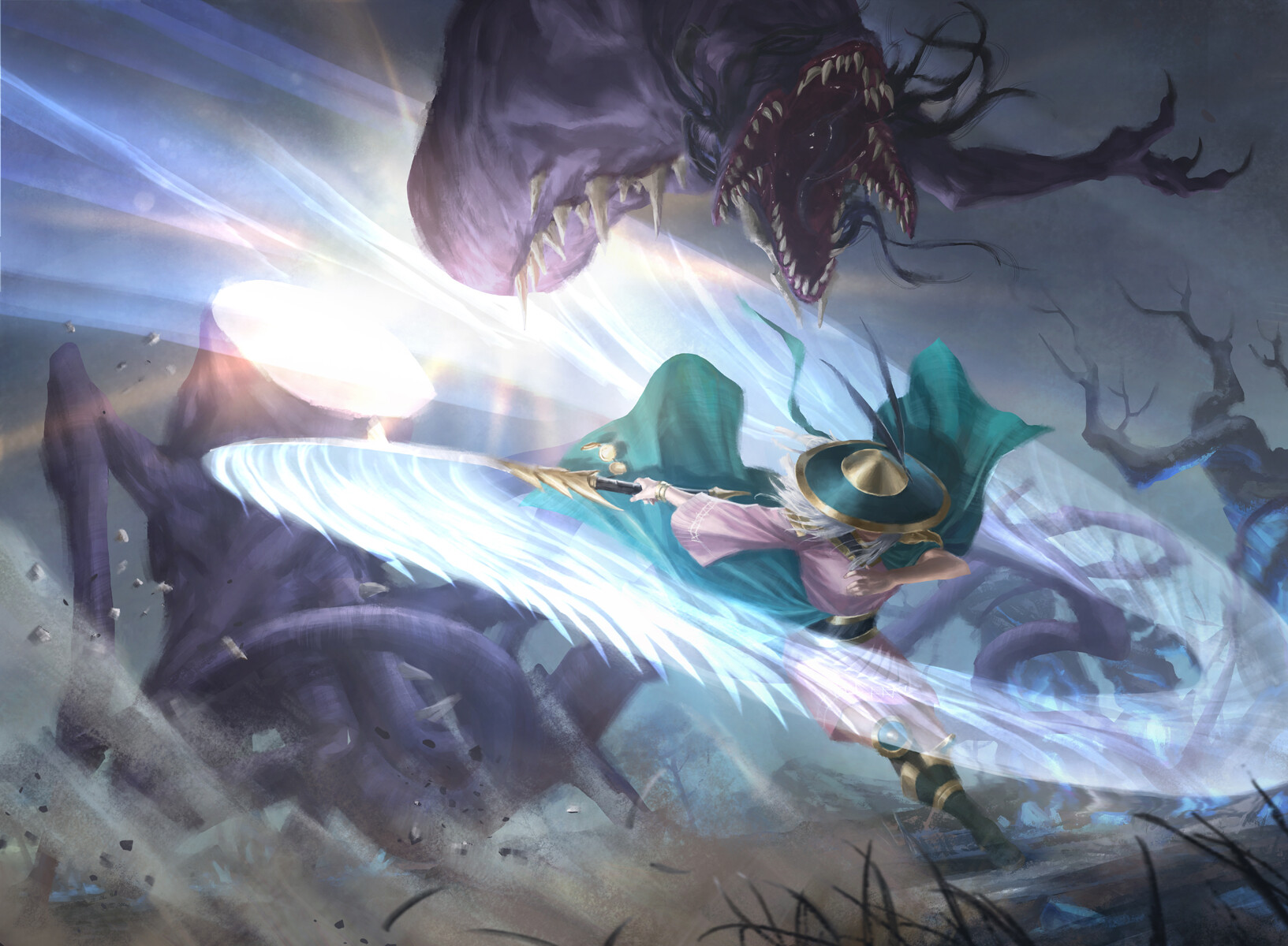
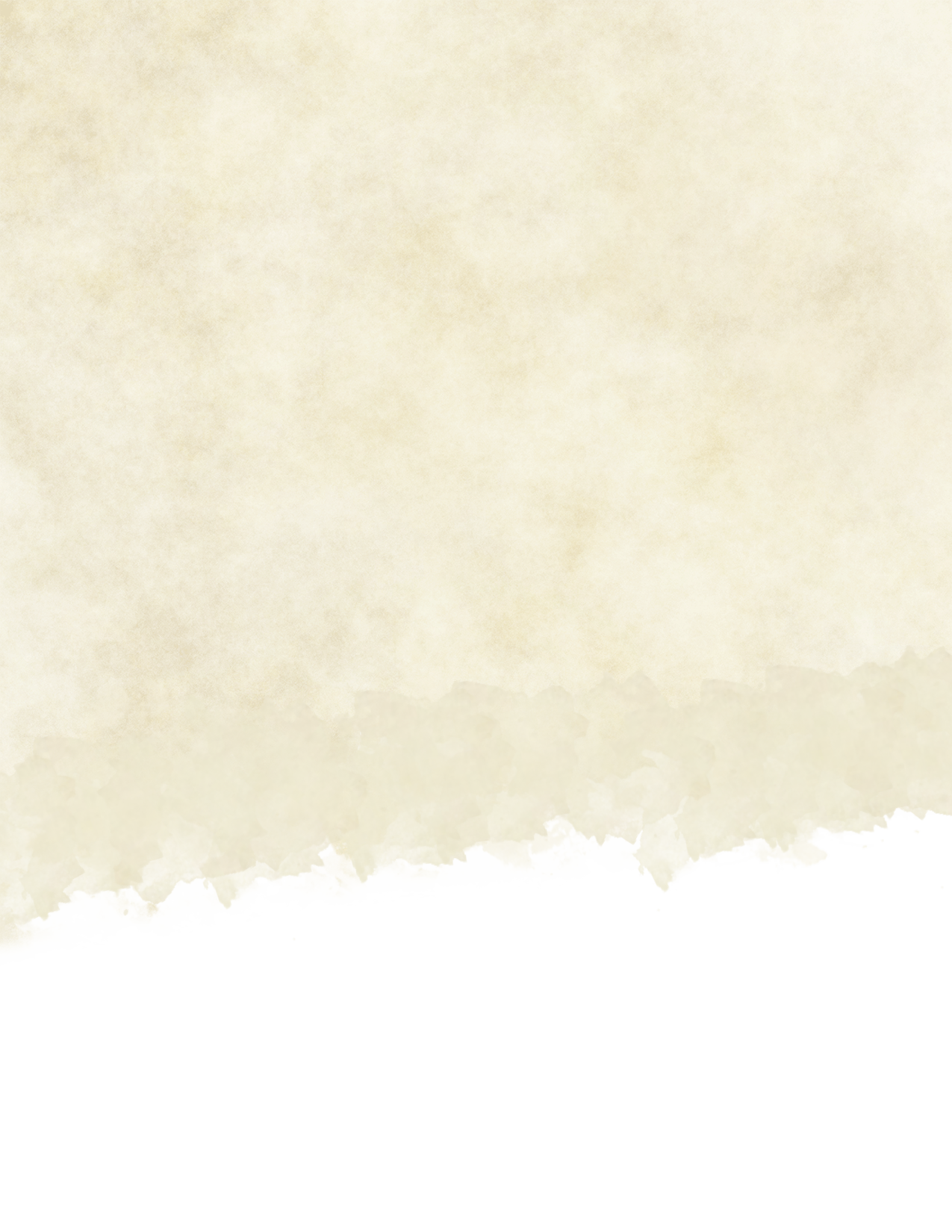
Prerequisites
Dexterity 13. Bladesingers need to be deft with the sword.
Intelligence or Charisma 15. The arcane aspect of bladesinging requires great magical prowess.
10th level Bard, Sorcerer, or Wizard. The art of bladesinging requires dedication, training, and discipline achieved through years of magical mastery, and you must have achieved 10th-level in either Bard, Sorcerer, or Wizard before you can gain levels in the Bladesinger prestige class.
Complete a special task. You must find a master and prove you are worthy of their time and training. Traditionally, only elves and half-elves learn this style of combat, but they will occasionally take on outsiders. A Bladesinger only takes a single apprentice at a time, and thus they search for the most gifted. Once accepted, you must spend a month with your master to learn the art of the bladesong.
Alternately, you can find ancient tomes or scrolls to study the art of bladesinging. Using this method will require at least 3 months of study and practice.
Class Features
As a bladesinger, you gain the following class features.
Hit Points
- Hit Dice: 1d8 per bladesinger level
- Hit Points at Higher Levels: 1d8 (or 5) + your Constitution modifier per bladesinger level after 1st
The Bladesinger
| Level | Proficiency Bonus | Features | Continued Spellcraft Level Bonus |
|---|---|---|---|
| 1st | +2 | Training in War and Song, Bladesong | — |
| 2nd | +2 | Continued Spellcraft | +1 |
| 3rd | +2 | Greater Bladesong | +2 |
| 4th | +2 | Ability Score Improvement, Song of Celerity (2nd level) | +2 |
| 5th | +3 | ─ | +3 |
| 6th | +3 | Extra Attack | +3 |
| 7th | +3 | Song of Victory | +4 |
| 8th | +3 | Ability Score Improvement, Song of Celerity (4th level) | +4 |
| 9th | +4 | ─ | +5 |
| 10th | +4 | Song of Fury, Perfect Bladesong | +5 |
Proficiencies
- Saving Throws: None
- Skills: Choose one from acrobatics, arcana, performance
Equipment
The bladesinger prestige class does not grant any special equipment.
Training in War and Song
At 1st level, you gain proficiency with light armor, and you gain proficiency with one type of one-handed melee weapon of your choice. At 5th and 7th level you can gain proficiency in an additional type of one-handed melee weapon of your choice.
Additionally, when you use these weapons, you can use Dexterity instead of Strength for the attack and damage rolls even if it lacks the finesse property.
Bladesong
As a bladesinger, you can invoke a secret elven magic called the Bladesong, provided that you aren't wearing non-mithral medium armor, heavy armor, or using a shield. It graces you with supernatural speed, agility, and focus.
You can use a bonus action to start the Bladesong, which lasts for 1 minute. It ends early if you are incapacitated, if you don non-mithral medium armor, heavy armor, a shield, or if you use a two-handed weapon to make an attack. You can also dismiss the Bladesong at any time you choose (no action required).
While your Bladesong is active, you gain the following benefits:
- You gain a bonus to your AC equal to your bladesinger level, but the bonus cannot exceed your spellcasting modifier.
- Your walking speed increases by 10 feet.
- You have advantage on Dexterity (Acrobatics) checks.
You can use this feature twice. You regain all expended uses of it when you finish a short or long rest.
Why the changes to Bladesong?
In the lore of bladesingers and in previous editions, the bladesinger could use elven chain and light armor. Since elven chain is now a magic item, non-mithral armor provides an additional option that can be used.
There are also changes to the weapon usage. You can now use bladesong while using two-weapon fighting and two handing a versatile weapon.
Continued Spellcraft
At 2nd level, you further develop the magical prowess you gained from your previous class. Choose one of the following classes that you have reached 10th level in: Bard, Sorcerer, or Wizard. Your spell slots, spells known/prepared, and cantrips known increase as if you had gained a level in that class.
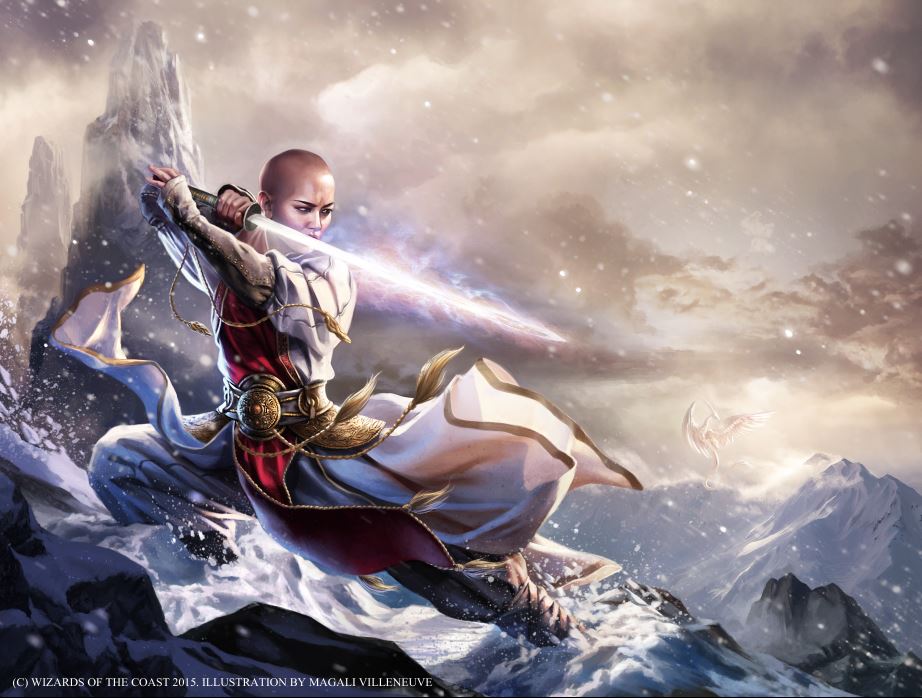
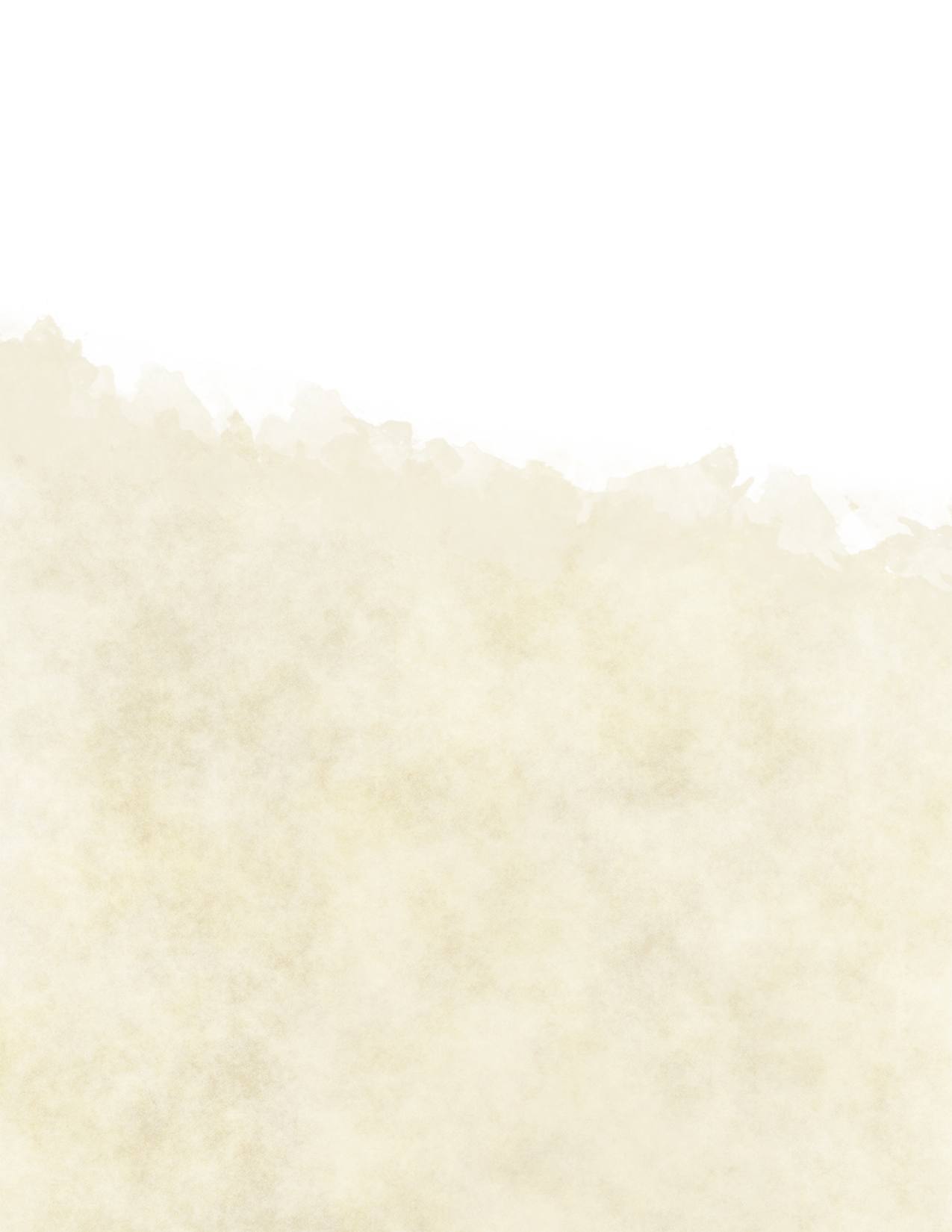

For example, if you were a 10th level wizard, you would gain one 6th level spell slot, could add 2 spells to your spell book, and prepare 1 additional spell per long rest.
You gain this benefit again at 3rd, 5th, 7th, and 9th level.
Greater Bladesong
At 3rd level, you have learned to delve deeper into the flow of your bladesong. You gain a bonus to any Constitution saving throw you make to maintain your concentration on a spell. The bonus equals your spellcasting modifier (minimum of +1).
Ability Score Improvement
When you reach 4th level, and again at 8th level, you can increase one ability score of your choice by 2, or you can increase two ability scores of your choice by 1. As normal, you can’t increase an ability score above 20 using this feature.
Song of Celerity
By 4th level, when your bladesong is active, you can cast a spell of 2nd level or lower with a casting time of one action as a bonus action. You can use this feature a number of times equal to half your spellcasting modifier (rounded down, minimum of 1), and you regain all uses at the end of a long rest.
At 8th level, you can use this feature to cast spells of 4th level or lower.
Extra Attack
Starting at 6th level, you can attack twice, instead of once, whenever you take the Attack action on your turn.
Song of Victory
At 7th level, you can channel arcane energy into your weapon. While your bladesong is active, your melee weapon attacks deal additional force damage equal to your spellcasting modifier.
Song of Fury
Your bladesong has gained a new, faster tempo. At 10th level, you can forgo your bladesong's AC bonus to make a 3rd melee weapon attack. Your AC bonus returns at the beginning of your next turn.
Perfect Bladesong
You have learned to truly become one with your bladesong. At 10th level, your bladesong only ends when you don non-mithral medium armor, heavy armor, a shield, or use a two-handed weapon. When you remove the armor, shield, or weapon that caused it to end, your bladesong resumes at the end of your next turn.
Credits
In order of appearance:
- Blade Banish MtG Art by Lie Setiawan
- Graceblade Artisan MtG Art by Magali Villeneuve
- Naya Hushblade MtG Art by Jason Chan\pagebreakNum
